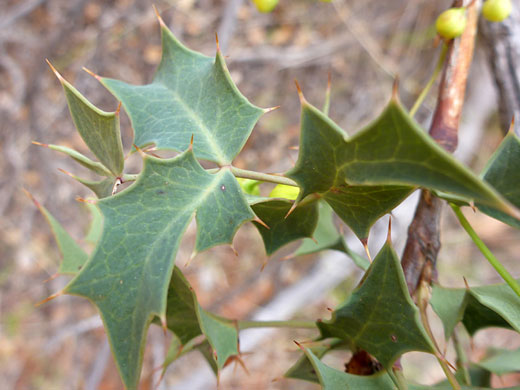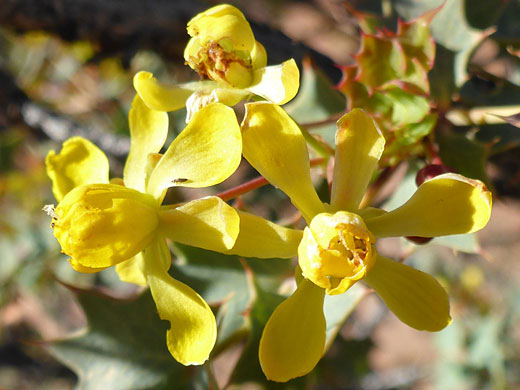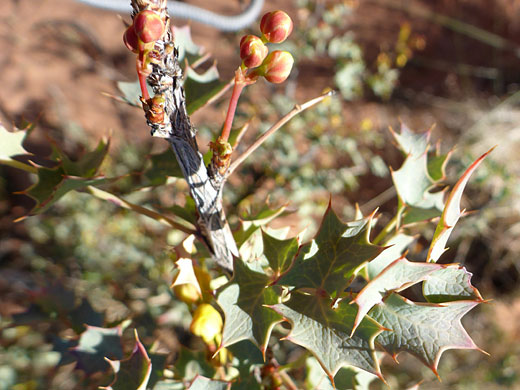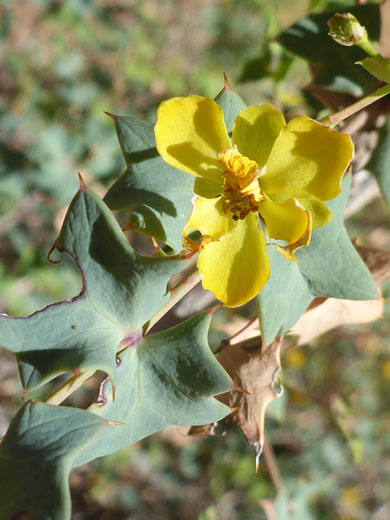Common name:
Fremont's barberry
Family:
Scientific name:
Mahonia fremontii
Synonym:
Berberis fremontii
Main flower color:
Range:
From southeast California to New Mexico and west Colorado
Height:
Up to 12 feet
Habitat:
Hillsides, canyons and flats in semi-deserts and pinyon-juniper woodland
Leaves:
Up to 4 inches long, divided into 5 to 9 leaflets, each with 5 large, spiny teeth along the edge
Season:
April to June
Mahonia fremontii is a large shrub that branches freely, with woody stems and spiny, holly-like leaves, becoming up to 12 feet high and wide. Leaves are compound, divided into 5, 7 or 9 (less often 3 or 11) leaflets which are colored light green at first, becoming grey-green with age, while the spines and leaflet margins are often reddish. Leaf surfaces are smooth and hairless. Leaflets are slightly longer (up to 1.25 inches) than they are wide. The bark ages to brown or greyish purple.
Flowers are produced in small, open clusters of three to six heads; each has six yellow, rounded sepals and six similar-looking yellow petals, around half an inch long. The sepals open fully while the petals overlap to create a cup-shape, enclosing the six stamens. The fruits are dry, grape-like berries, initially green, maturing to purple.
Flowers are produced in small, open clusters of three to six heads; each has six yellow, rounded sepals and six similar-looking yellow petals, around half an inch long. The sepals open fully while the petals overlap to create a cup-shape, enclosing the six stamens. The fruits are dry, grape-like berries, initially green, maturing to purple.
All Contents © Copyright The American Southwest | Comments and Questions | Contribute | Site Map








